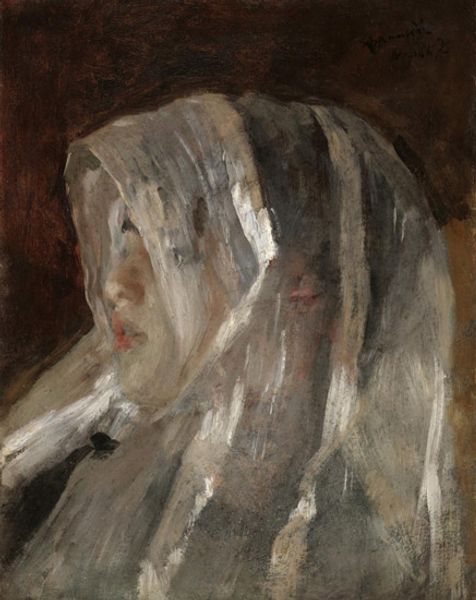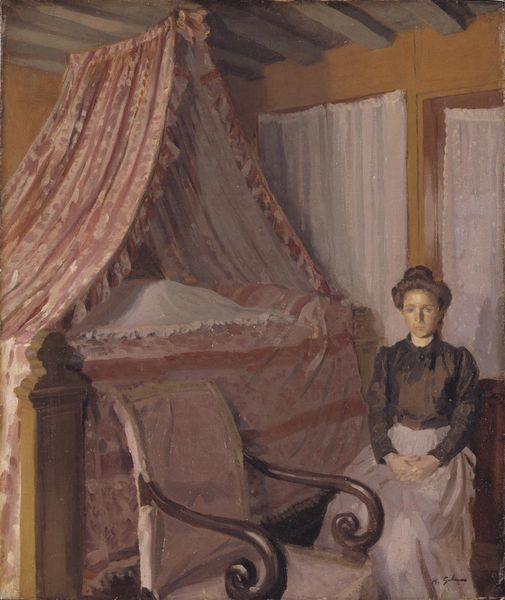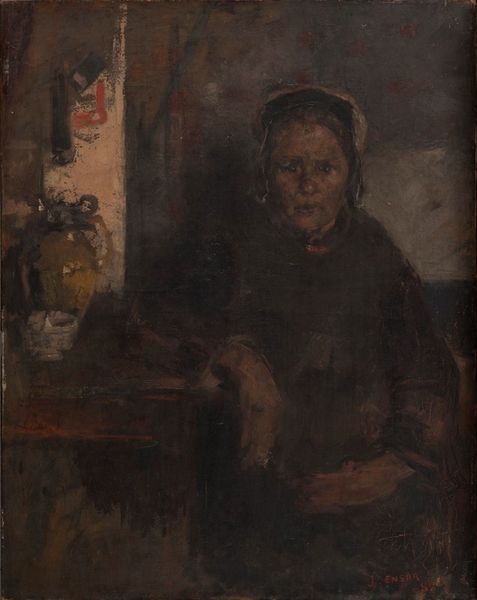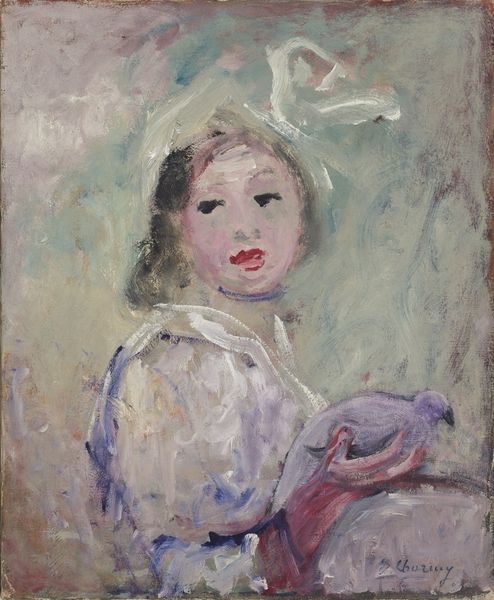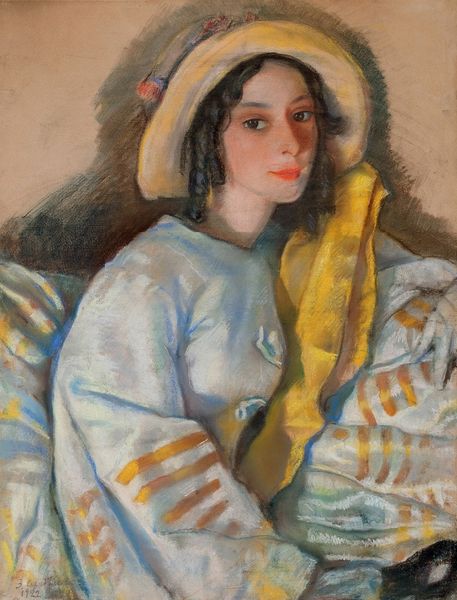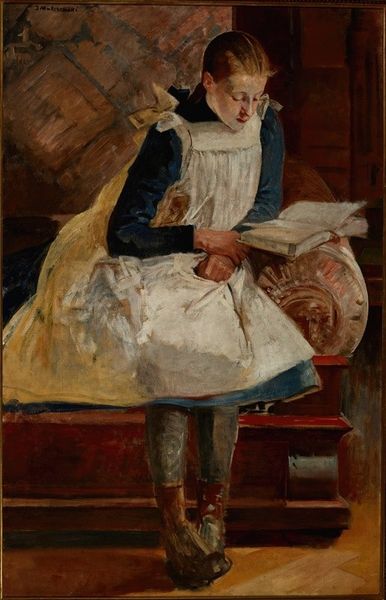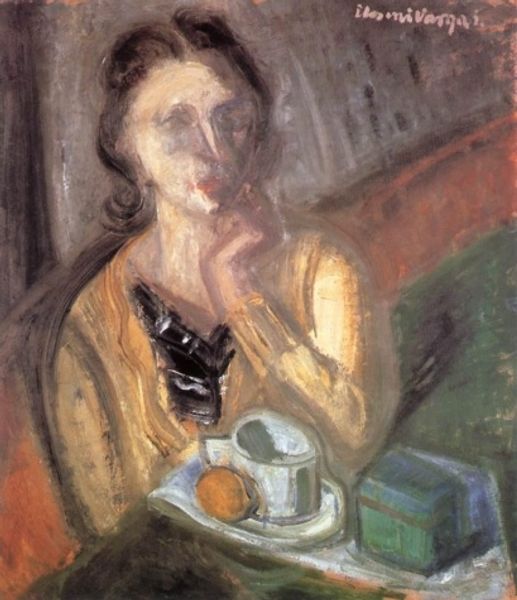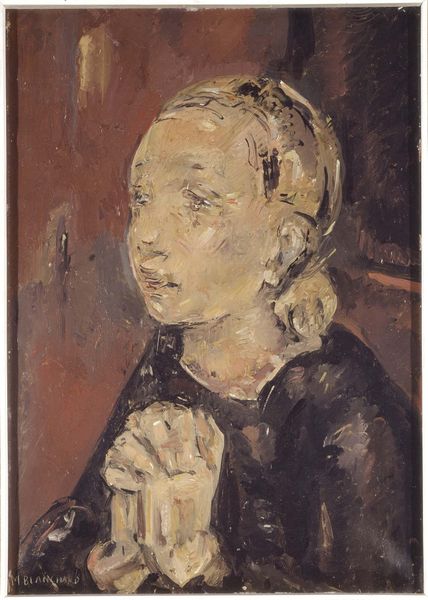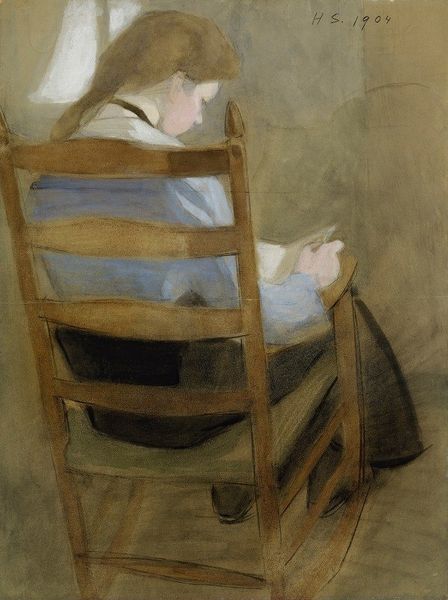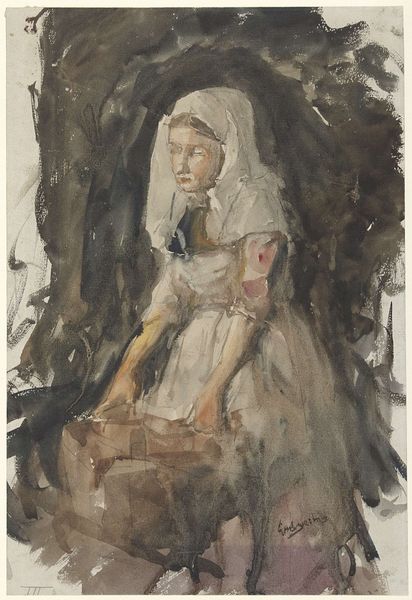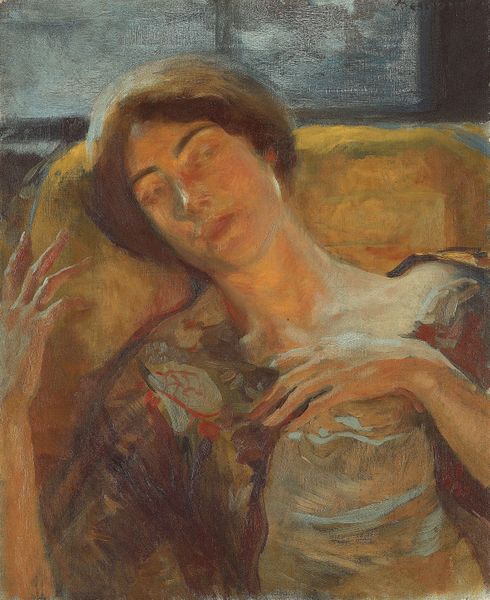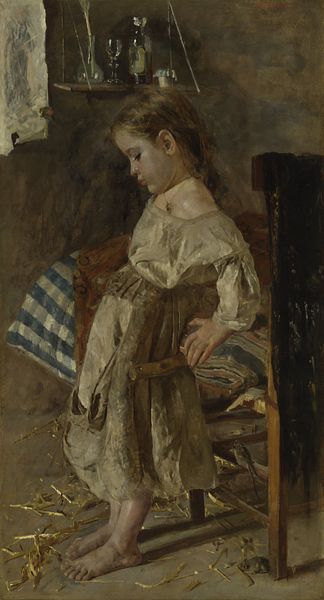
pastel
#
portrait
#
figuration
#
oil painting
#
intimism
#
pastel
#
portrait art
Copyright: Public domain
Editor: This is María Blanchard’s "La Convalescente," made around 1926 using pastel. There's such a feeling of quiet exhaustion radiating from this sleeping figure. What do you see in this piece beyond that initial impression? Curator: I see a powerful representation of female experience shaped by physical vulnerability and societal expectation. Blanchard, as a woman and a disabled artist, continually negotiated boundaries of inclusion. Do you notice how the intimacy of the scene contrasts with the figure's almost mask-like stillness? Editor: Yes, there is something unsettling there too. The window hints at a world outside, but she’s turned inward. Curator: Exactly. This enforced domesticity was a frequent experience for women, particularly those facing illness. It’s also worth noting Blanchard's embrace of Intimism; think about the ways she uses softness in the pastels and color choices to depict the everyday struggles, reflecting themes prevalent among women artists of her time. Where do you think the artist stands regarding this situation? Editor: I think Blanchard perhaps both empathizes with and critiques this enforced passivity, based on what you have explained. She’s making us look at an experience we might otherwise overlook. Curator: Precisely. It’s a window into the complexities of female existence in the early 20th century and perhaps today. Blanchard's personal life has always found space in her paintings. Editor: It's fascinating how much social context can be contained within one intimate scene. I never thought about how her personal history had a say in it. Curator: And hopefully, that opens doors to new interpretations for you.
Comments
No comments
Be the first to comment and join the conversation on the ultimate creative platform.

